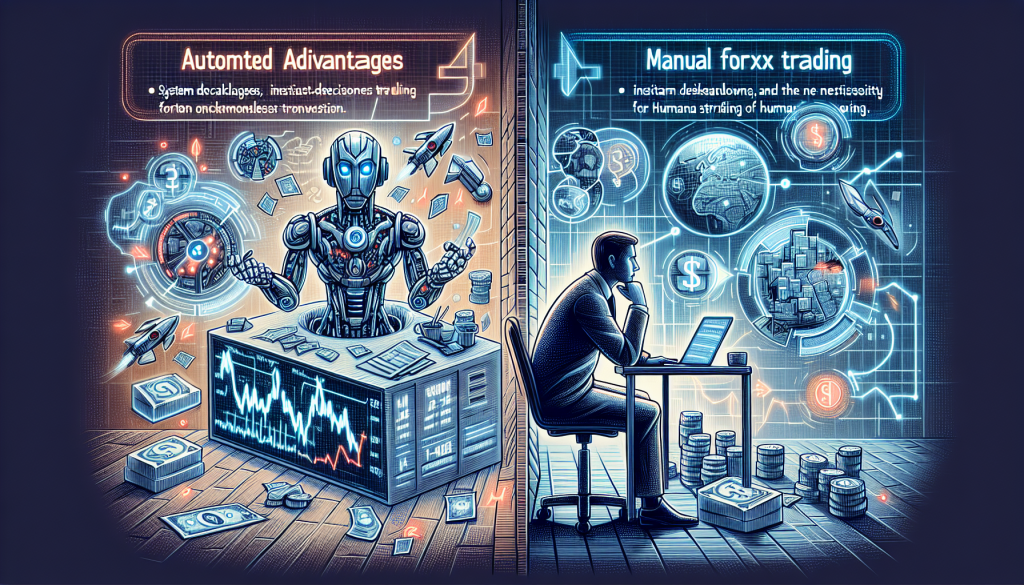Automated Forex Trading: Evaluating the Pros and Cons

Automated Forex Trading is a popular topic in the financial world, attracting a diverse range of opinions. This method of trading offers a unique approach to navigating the foreign exchange market, a platform on which currencies pair off and compete. In this article, we’ll delve into the advantages and disadvantages of Automated Forex Trading.
Understanding Automated Forex Trading
Automated Forex Trading involves using a computer program to manage and execute trades in the foreign exchange market. The software follows a predetermined set of rules called an algorithm, which is based on price, timing, or quantity to make trades. The aim is to remove the human element of emotion and guesswork, functioning instead on cold hard data.
The Pros of Automated Forex Trading
- Elimination of Emotional Trading: Automated Forex Trading eliminates the risk of emotional trading. The software operates purely on logic and analytics, disregarding fear, greed, or any other emotions that typically affect human traders.
- 24/7 Trading: The forex market operates 24 hours a day, five days a week. An automated system can monitor and trade in the market round the clock, something a human trader can’t achieve.
- Speed and Accuracy: Automated systems can generate orders as soon as trade criteria are met, leading to increased order entry speed. Additionally, it eliminates the risk of human errors in placing the trades.
- Diversification: Automated trading allows the simultaneous trading of multiple accounts or various strategies at one time. This diversification can spread risk over various instruments while hedging against losing positions.
The Cons of Automated Forex Trading
- System Failures: The theory behind automated trading makes it seem simple, but software systems can crash or malfunction, which can lead to incorrect orders, missing orders, or duplicate orders.
- Monitoring: Though it may seem ideal to turn on the computer and leave for the day, automated trading systems still require monitoring. Network failures, power disruptions, and system quirks can all affect performance.
- Over-Optimization: An over-optimized system works perfectly on historical data, but it often fails on new data. Traders should be wary of back-testing, as actual conditions can vary from tested scenarios.
Conclusion
Automated Forex Trading offers numerous advantages, such as round-the-clock operation, quick decision-making, and emotion-free trading. However, system failures and the need for monitoring are considerable drawbacks. Ultimately, the choice between automated and manual trading depends on individual preferences, risk tolerance, and trading knowledge.
Remember, it’s crucial to conduct thorough research and perhaps seek advice from a financial advisor before diving into the world of Automated Forex Trading.
If you want to learn to trade the way professionals do check out our CPD Certified Mini MBA Program in Applied Professional Forex Trading With Mentoring.

